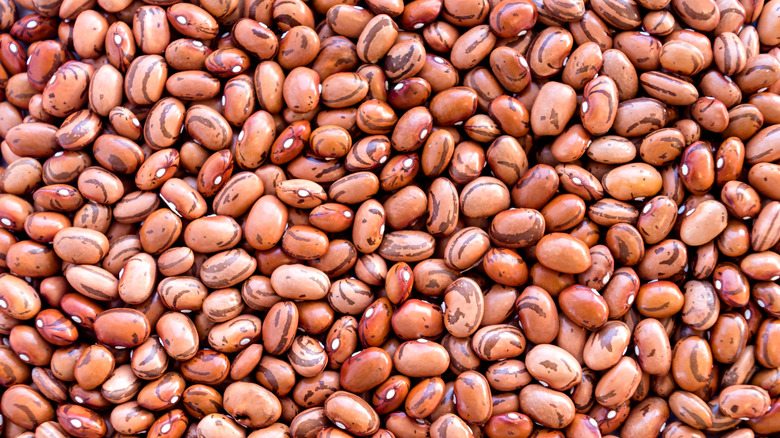Rachael Ray's Shortcut For Boiling Beans Will Change Your Life
Although Rachael Ray doesn't identify as a chef, citing her lack of professional, formal training, she has doled out countless helpful tips since "30 Minute Meals" debuted in 2001. Whether explaining how to season food perfectly every time or giving advice on how to save time in the kitchen, she's got you covered.
One of our favorite hacks from Ray is how she reduces soaking time for dried beans. This tedious process requires letting dried beans sit in a bowl of water for hours. Unfortunately, this step can stop your dinner plans in their tracks if you haven't prepped the beans far enough in advance. Ray suggests pouring boiling water over the dry beans instead.
Soaking beans is an important step, whether you're working with dried cannellini beans, black beans, or pinto beans. This time submerged in water allows the beans to rehydrate, eliminates their dry, brittle texture, softens the skin, and tenderizes the flesh. Some say soaking even reduces the gassy effects of beans. Ray's tip is to cover the beans in boiling water and let them stand for one hour before rinsing. Why not just use canned? Many bean fanatics swear that dried beans provide way more flavor.
Why soaking beans matters
While soaking is key to maximizing the flavor and texture of the beans, heat can be used as an accelerant. For example, consider making a cup of tea. It's faster to submerge the bag full of dried leaves into a cup of hot water than to let them diffuse slowly in room temperature or cold water. Heat moves the process forward faster.
It may seem curious that Rachael Ray doesn't recommend keeping the beans at a boil to rehydrate them, thus skipping the soaking step altogether. However, this would be laborious and fruitless. Instead of enjoying a passive, quick pre-soak, you'll be left to monitor the boiling beans, which are prone to uneven cooking, with some quickly becoming mushy and others remaining rock hard. Plus, Ray's quick soak method maintains the flavors of the beans rather than allowing the sugars and nutrients to leach out into the boiling water. Returning to the tea bag example, if you kept the leaves at a consistent boil instead of leaving them to steep, you'd be left with a stewed bitter brew; the same is true of overcooked beans. That's why Ray's quick-soak method reigns supreme.

